SOURCE: AFI


Recent reports have spotlighted China’s development of interconnected jack-up barges, dubbed “invasion barges” by some analysts, as a potential tool for amphibious operations, particularly in the context of a possible invasion of Taiwan. These barges, designed to form temporary piers by linking together with jack-up supports for stability, could theoretically enable the People’s Liberation Army Navy (PLAN) to offload troops, tanks, and supplies onto Taiwan’s shores with greater speed and flexibility. However, while this innovation might appear to enhance China’s military capabilities on paper, there are significant reasons to question whether these barges would succeed—or fail spectacularly—in a real-world conflict scenario.
The interconnected jack-up barges are a novel design, reportedly under construction at facilities like the Guangzhou Shipyard International (GSI). These vessels are equipped with long ramps or bridges—some extending over 120 meters—and stabilizing jack-up legs that anchor them to the seabed. In theory, they could form a makeshift pier, connecting larger ships (including civilian roll-on/roll-off ferries often used by the PLAN) to the shore, even in areas lacking traditional port infrastructure. This would allow China to bypass heavily defended Taiwanese ports or beaches, landing forces at less fortified coastal sites, such as rocky shores or mudflats.
Continue readingSOURCE: RAUNAK KUNDE / NEWS BEAT / IDRW.ORG
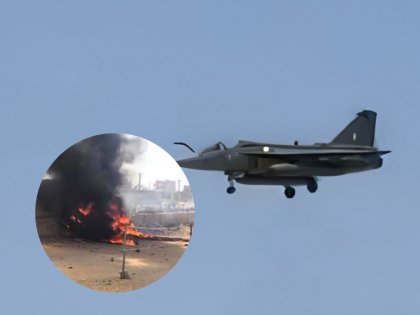

The IAF’s first-ever LCA Tejas Mk-1 crash, which happened last year, has generated considerable discussion within the defense community. Although the initial narrative centered on a suspected oil pump malfunction leading to engine seizure, sources connected to idrw.org have now clarified that the oil pump was not the cause, reigniting attention on the incident and the true factors behind it.
The crash last year was a historic setback, being the first recorded loss of a Tejas aircraft since its induction. The jet, part of the IOC/FOC fleet, experienced engine failure while coming for landing after after taking part in a tri-services exercise, forcing the pilot to eject. While the pilot escaped unharmed, the incident prompted an immediate investigation by the IAF and raised concerns about the reliability of the aircraft, which is powered by the US-made GE Aerospace F404 engine.
Continue readingSOURCE: RAUNAK KUNDE / NEWS BEAT / IDRW.ORG


According to a source familiar with the Nuclear Attack Submarine (SSN) program, the design for India’s new attack submarine, currently in the design phase, is expected to be ready by early or mid-2029. This next-generation SSN will mark a significant departure from the Arihant-class ballistic missile submarines (SSBNs), representing a modern and advanced platform tailored for attack missions.
The Indian Navy initially embarked on the Arihant-class project as an SSN program. However, before construction commenced, the design was modified to create India’s first SSBN fleet. Now, with the Ministry of Defence (MoD) granting clearance for the dedicated SSN program, the first two nuclear attack submarines will be based on an entirely new design that will incorporate state-of-the-art advancements in stealth, manoeuvrability, and combat effectiveness.
Continue readingSOURCE: RAUNAK KUNDE / NEWS BEAT / IDRW.ORG
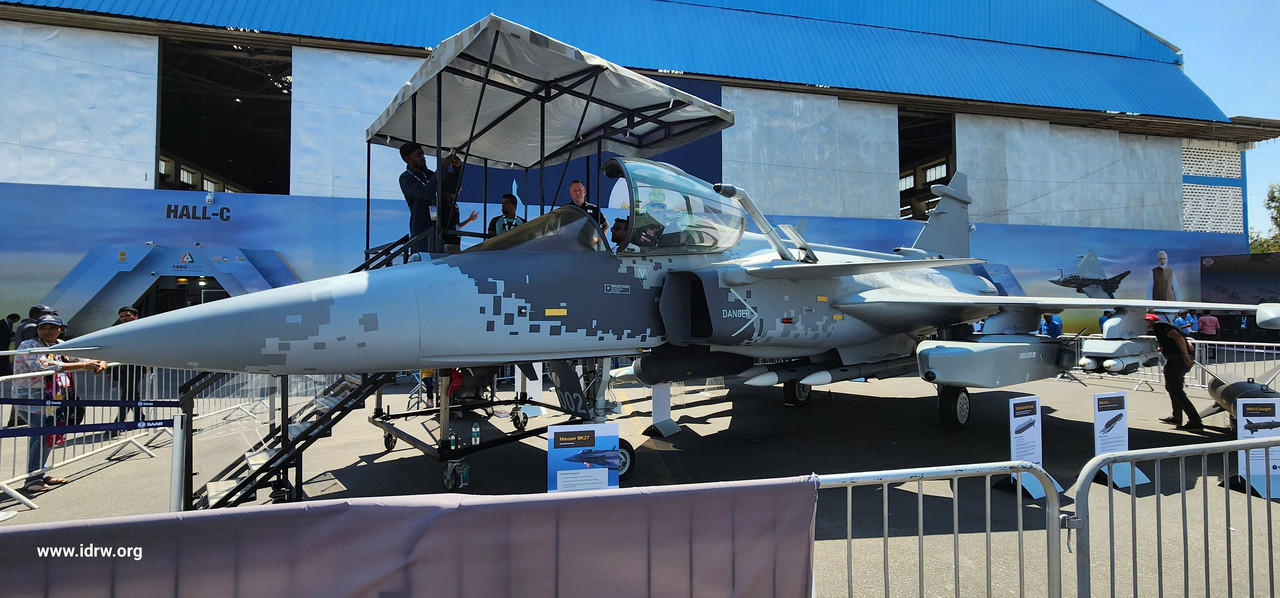

As the Indian Air Force (IAF) seeks to bolster its fighter fleet with aircraft capable of addressing the complexities of modern warfare, adaptability and rapid technological upgrades have emerged as critical requirements.
Amidst ongoing deliberations over the Multi-Role Fighter Aircraft (MRFA) program to acquire 114 new fighters, Annika Meijer, Head of Design for Saab’s Gripen, has highlighted how the Gripen’s modular design and agile architecture make it a compelling option for India. In a detailed exposition, Meijer explained how the Gripen’s innovative approach to software layering, hardware integration, and intellectual property (IP) protection aligns perfectly with the IAF’s need for a fighter that is adaptable, future-ready, and primed for seamless technological advancements.
Continue readingSOURCE: AFI


In a candid address at a recent defense conclave in New Delhi, the Chief of the Indian Air Force (IAF), Air Chief Marshal AP Singh, admitted that last-minute changes in armament and other specifications requested by the IAF may have contributed to delays in the Light Combat Aircraft (LCA) Tejas program. However, he also rationalized these alterations, arguing that the prolonged development timeline of the jet necessitated updates to ensure it remains equipped with the latest hardware and weaponry, aligning with contemporary operational requirements and technological advancements.
The LCA Tejas, developed by Hindustan Aeronautics Limited (HAL) in collaboration with the Aeronautical Development Agency (ADA), was conceived in the 1980s as a lightweight, multirole fighter to replace the IAF’s ageing fleet of MiG-21s. Despite achieving Initial Operational Clearance (IOC) in 2015 and Final Operational Clearance (FOC) in 2019 for the Mk1 variant, the program has faced criticism for significant delays, cost overruns, and production bottlenecks.
Continue readingSOURCE: AFI


Air Commodore Nouman Ali Khan, a decorated officer of the Pakistan Air Force (PAF) who gained prominence for shooting down an Indian MiG-21 Bison while piloting an F-16 during the 2019 aerial skirmish, recently made headlines with pointed remarks about India’s Light Combat Aircraft (LCA) Tejas program.
Khan, speaking at a defense seminar in Islamabad, took a dig at the Tejas, questioning its operational status and mocking its absence near India’s frontline bases along the international border. In contrast, he lavished praise on the Sino-Pakistani JF-17 Thunder Block-III jets, asserting their superiority over even the upgraded F-16 (MLU-20) and highlighting their active role in multiple combat operations.
Continue readingSOURCE: AFI


In a significant update to its industrial plan on 11 March, Leonardo, one of the key partners in the three-nation Global Combat Air Programme (GCAP), revealed a first-order estimate for the ambitious sixth-generation fighter jet program. The company disclosed that a total of 350 platform orders are expected for the joint venture by 2035, signaling strong confidence in the program’s future.
The GCAP, a collaborative effort between Italy, Japan, and the UK, aims to replace aging fourth- and fifth-generation fighters in the fleets of their respective air forces. An analysis of the current combat aircraft inventories of these nations suggests that Japan’s Air Self-Defense Force (JASDF) is likely to emerge as the largest operator of the new platform, driven by its substantial fleet replacement needs.
Continue readingSOURCE: AFI


In a landmark achievement for India’s indigenous defense technology, the Aerial Delivery Research and Development Establishment (ADRDE) in Agra has successfully demonstrated the capabilities of its Military Combat Parachute System (MCPS) with a combat freefall jump from an altitude of 27,000 feet.
Carried out with a full combat load, this jump marks the MCPS as the only parachute system currently in use by the Indian Armed Forces capable of deployment above 25,000 feet. The successful trial, executed by Wing Commander Vishal Lakhesh VM(G), Master Warrant Officer R J Singh, and Master Warrant Officer A A Baidya, underscores the system’s reliability and advanced features, positioning it as a game-changer for high-altitude airborne operations.
Continue readingSOURCE: IDRW.ORG


At Aero India 2025, Bharat Dynamics Limited (BDL), in collaboration with the Defence Research and Development Organisation (DRDO), showcased its latest indigenous innovation—the Prabha Laser Beam Rider Guided Missile (LBRGM). This advanced anti-tank guided missile (ATGM) system marks a significant step forward in India’s quest for self-reliance in defense technology, offering a versatile and precise solution for modern battlefield requirements. Designed to enhance the Indian Army’s capabilities, the Prabha missile demonstrates India’s growing prowess in developing sophisticated weaponry tailored to its unique operational needs.
The Prabha LBRGM is an indigenously designed wireless ATGM system that leverages laser beam riding guidance technology, a proven method for precision targeting. Unlike fire-and-forget systems, laser beam riding guidance ensures the missile follows a laser beam directed at the target, offering high accuracy and resistance to countermeasures. The missile’s design makes it suitable for deployment from Infantry Combat Vehicles (ICVs) and ground-based launchers, providing flexibility across various combat scenarios.
Continue readingSOURCE: IDRW.ORG


At Aero India 2025, held in Bengaluru from February 10-14, Zen Technologies, a leading Indian defense technology company, showcased its cutting-edge Airborne Killer Drone System, a vertical takeoff and landing (VTOL) platform that marks a significant leap in autonomous aerial warfare. Designed to serve as a “mothership” for smaller autonomous killer drones, this system promises to redefine precision strikes and battlefield dominance with its impressive range, endurance, and advanced capabilities.
The Airborne Killer Drone System, presented by Zen Tech, is a VTOL-capable unmanned aerial vehicle (UAV) designed to act as a mothership for deploying smaller autonomous killer drones. This hierarchical approach allows the system to extend its operational reach and effectiveness, enabling coordinated attacks on multiple targets with precision. The smaller drones, launched from the mothership, can be guided to their targets with high accuracy, making the system ideal for complex missions where direct line-of-sight engagement may be impractical or risky.
Continue readingSOURCE: AFI
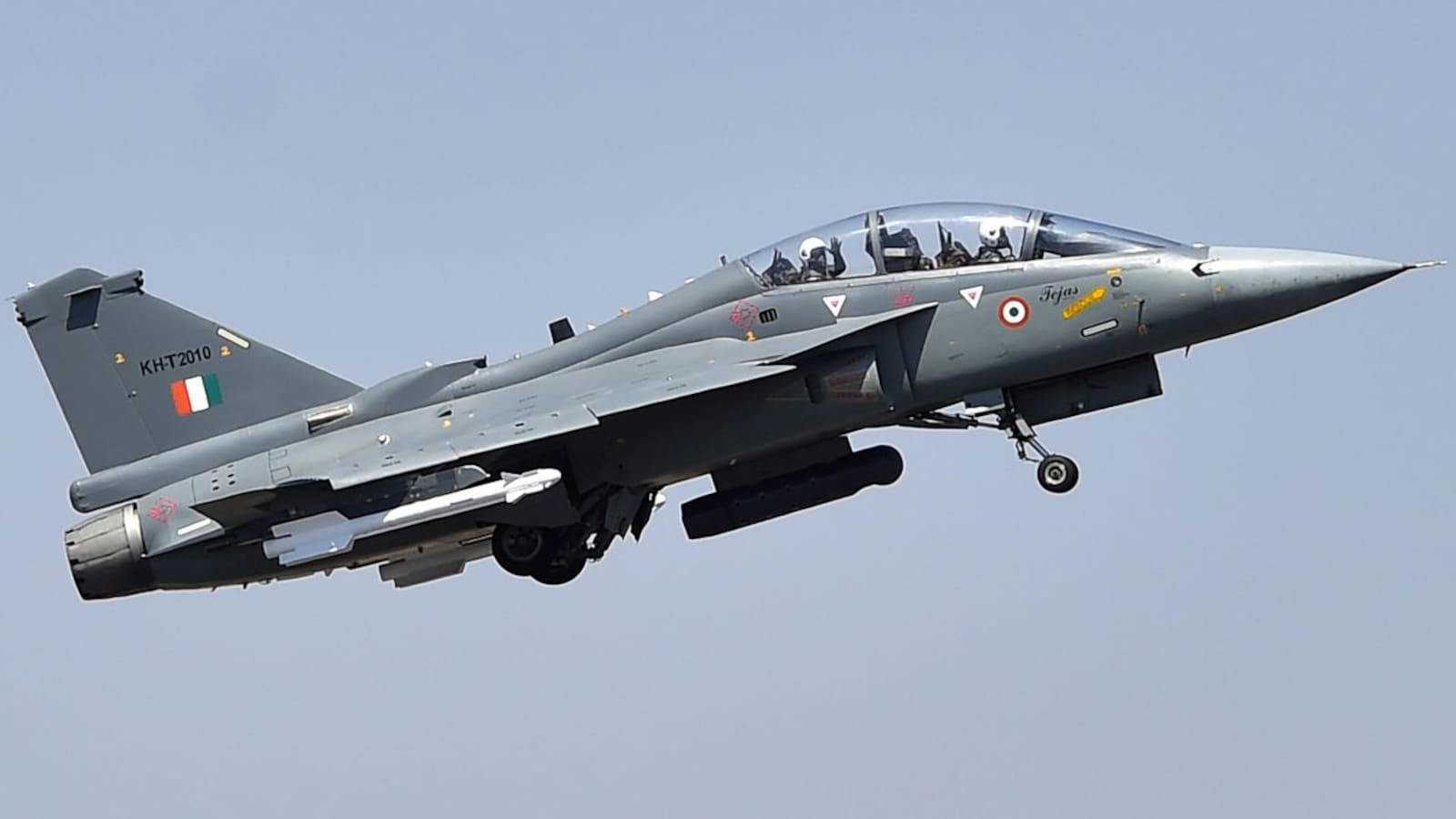

Hindustan Aeronautics Limited (HAL), India’s premier aerospace and defense manufacturing company, has achieved a significant milestone in its commitment to bolster the Indian Air Force (IAF) with indigenous fighter jets. HAL has successfully completed the manufacturing of nine Tejas Mk1 Trainer aircraft, part of an 18-aircraft order placed by the IAF, which includes 10 units ordered in 2021 and eight earlier. This development marks a crucial step in the modernization of the IAF’s training fleet, providing pilots with state-of-the-art platforms to prepare for operational duties.
Additionally, HAL is progressing with the production of the remaining aircraft, with the 11th and 12th Tejas Mk1 Trainers already on the assembly jig and nearing rollout, while plans are in place to complete the remaining seven trainers by the end of 2024.
Continue readingSOURCE: AFI
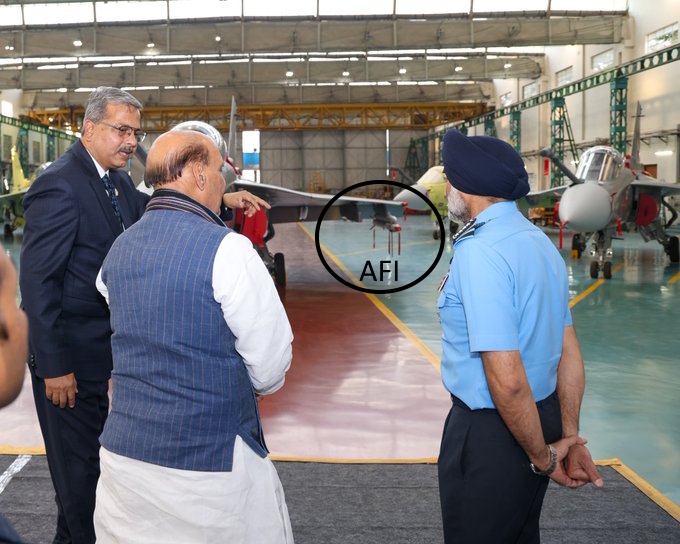

The Indian Air Force (IAF) has taken a significant step in modernizing its fleet of Light Combat Aircraft (LCA) Tejas Mk1A jets by integrating the Advanced Short Range Air-to-Air Missile (ASRAAM), marking a transition from the older Russian-origin R-73 missile. Recent sightings of the Tejas Mk1A equipped with the ASRAAM confirm that the IAF is moving forward with plans to enhance the aircraft’s close combat capabilities.
For years, the R-73 (NATO designation: AA-11 Archer) has been the primary short-range air-to-air missile for the IAF’s fighter fleet, including the Tejas Mk1. While the R-73 has proven reliable and effective in close combat scenarios, its technology dates back to the Soviet era, and newer missiles have since surpassed it in terms of range, sensor performance, and maneuverability. The decision to replace the R-73 with the ASRAAM on the Tejas Mk1A reflects the IAF’s recognition of the need for a more advanced close-combat missile to counter modern threats.
Continue readingSOURCE: AFI
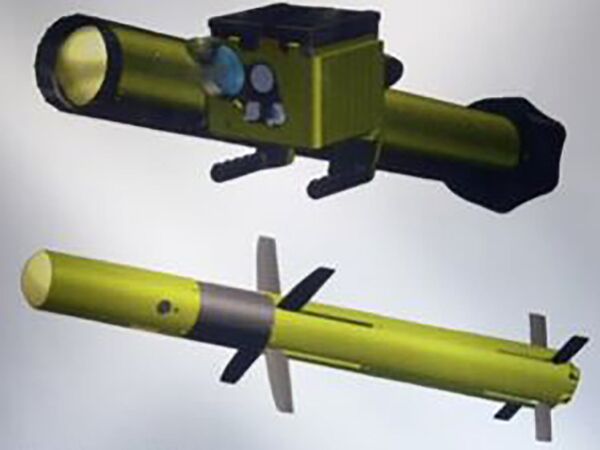

The Indian Army’s anti-tank guided missile (ATGM) inventory is at a critical juncture. While the Army continues to rely heavily on its ageing stock of 2nd-generation ATGMs, several locally developed 3rd-generation systems—both from the Defence Research and Development Organisation (DRDO) and private sector companies—are reaching maturity.
These indigenous 3rd-gen ATGMs offer superior capabilities, such as fire-and-forget technology, greater range, and enhanced penetration against modern armor. Yet, despite their readiness and potential, the Army appears reluctant to transition fully to these advanced alternatives, opting instead to procure more 2nd-gen systems, often through local license of imported systems.
Continue readingSOURCE: AFI

For decades, the geopolitical rivalry in South Asia has been shaped not only by the direct competition between India and Pakistan but also by the involvement of global powers like the United States and China. Since the 1960s, both nations have, at various points, provided Pakistan with advanced military technology, particularly in the realm of air power, often giving the Pakistan Air Force (PAF) a perceived edge over the Indian Air Force (IAF).
This dynamic has been a source of contention, with India repeatedly expressing concerns over how such support tilts the regional balance. From the U.S. supplying F-104 Starfighters in the 1960s and F-16s in the 1980s to China’s recent moves to potentially supply J-35 stealth fighters in 2025, the pattern of external powers enhancing Pakistan’s aerial capabilities has persisted, complicating India’s strategic calculus.
Continue readingSOURCE: AFI


In a significant milestone for defense technology, Gridbots Technologies, an Indian robotics and AI company, has announced the successful completion of No-Cost No-Commitment (NCNC) trials for its state-of-the-art autonomous weapon station, KATANA. Conducted at a high altitude of 15,000 feet in temperatures as low as -20°C, the trials demonstrated the system’s exceptional performance under extreme conditions.
With a precision of 30 cm scatter at a 400-meter target, real-time tracking capabilities, drone detection and kill functionality, and a suite of advanced features, the KATANA has solidified its position as one of the most advanced weapon stations in the world.
Continue reading